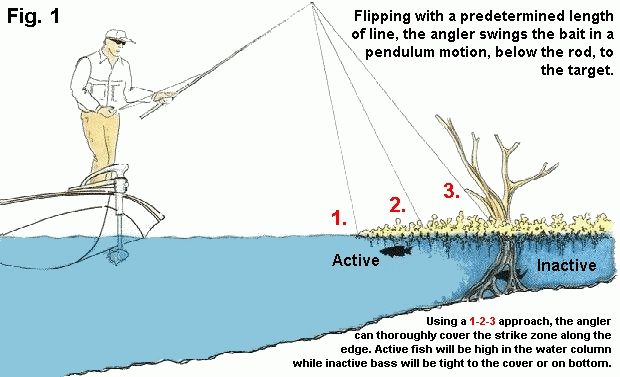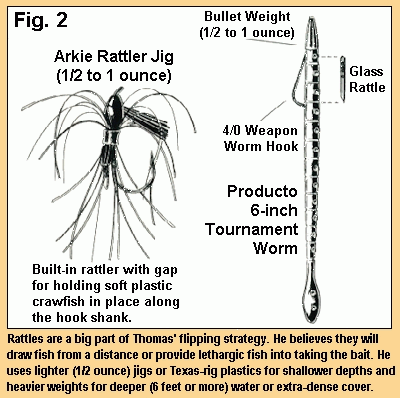 |
|
Written And Illustrated By BERNIE SCHULTZ
Matted vegetation attracts the biggest bass in many waters, and flipping is the way to haul them out...
Although his biggest tournament victory (the
$100,000 Red Man All American) depended upon finesse
fishing, Joe Thomas is basically a "power"
fisherman. |
whereby the rooted layer of topsoil becomes buoyant and literally tears free
from the lake's bottom. |
heat or a frigid winter front, bass, especially big ones, will retreat
to these kinds of hideaways. Even though they are
sometimes in a defensive mode, they can be caught. |
|
|
 |
|||
attention to the depth you're
flipping," he warns. "Any sudden change in the
amount of line you're using could mean a fish has the
lure." For instance, if you're flipping 6 feet of
water and the lure suddenly stops at a lesser depth, it's
possible a fish has taken the bait. |
If the cover is sparse or the water
exceedingly clear, Thomas switches to pumpkinseed-green
glitter. Sizes range from 1/2 to 1 ounce for extremely
thick cover. |
|||
![]() Send e-mail to bernie@bernieschultzfishing.com with questions or comments about this web
site.
Send e-mail to bernie@bernieschultzfishing.com with questions or comments about this web
site.

